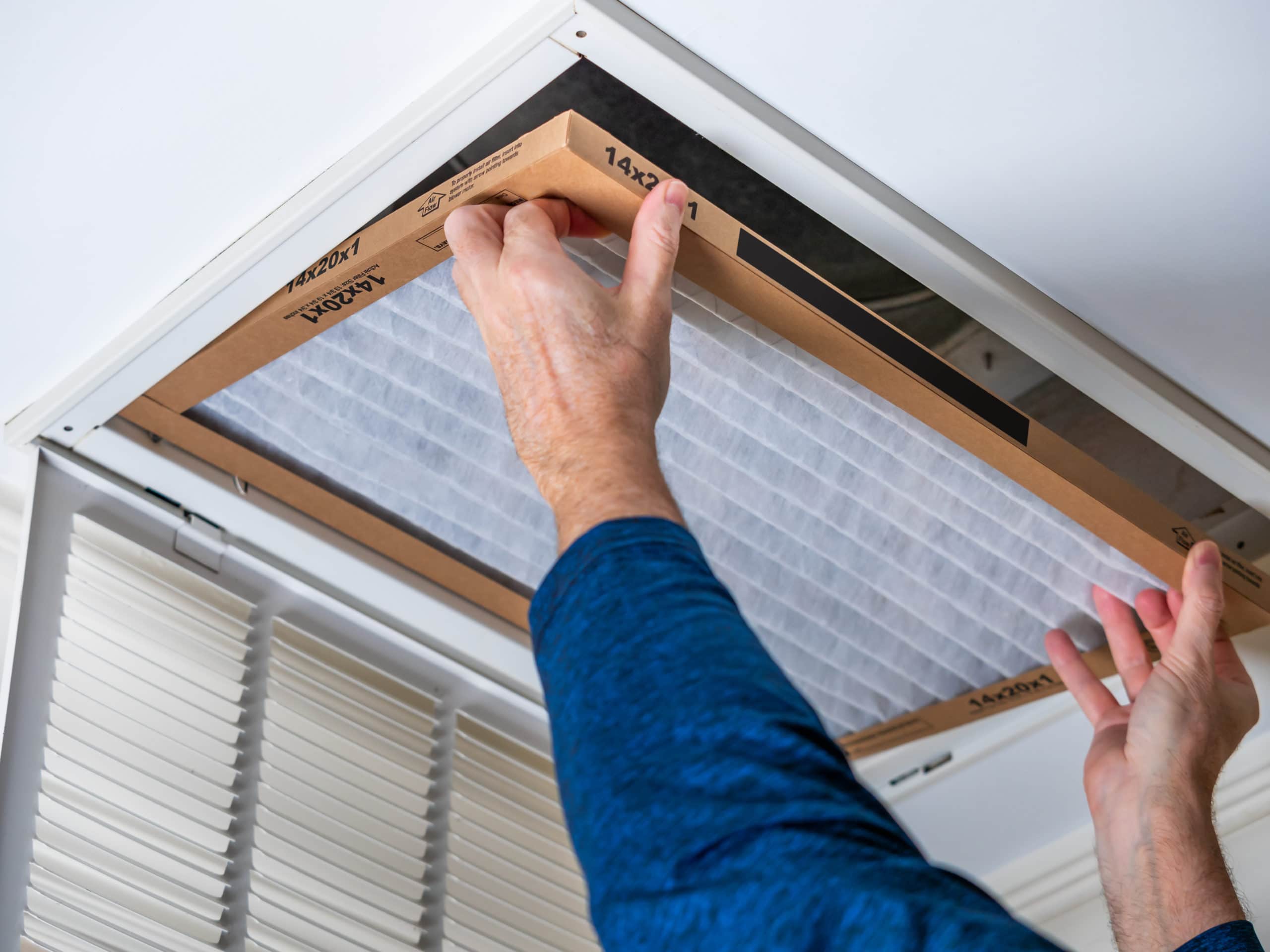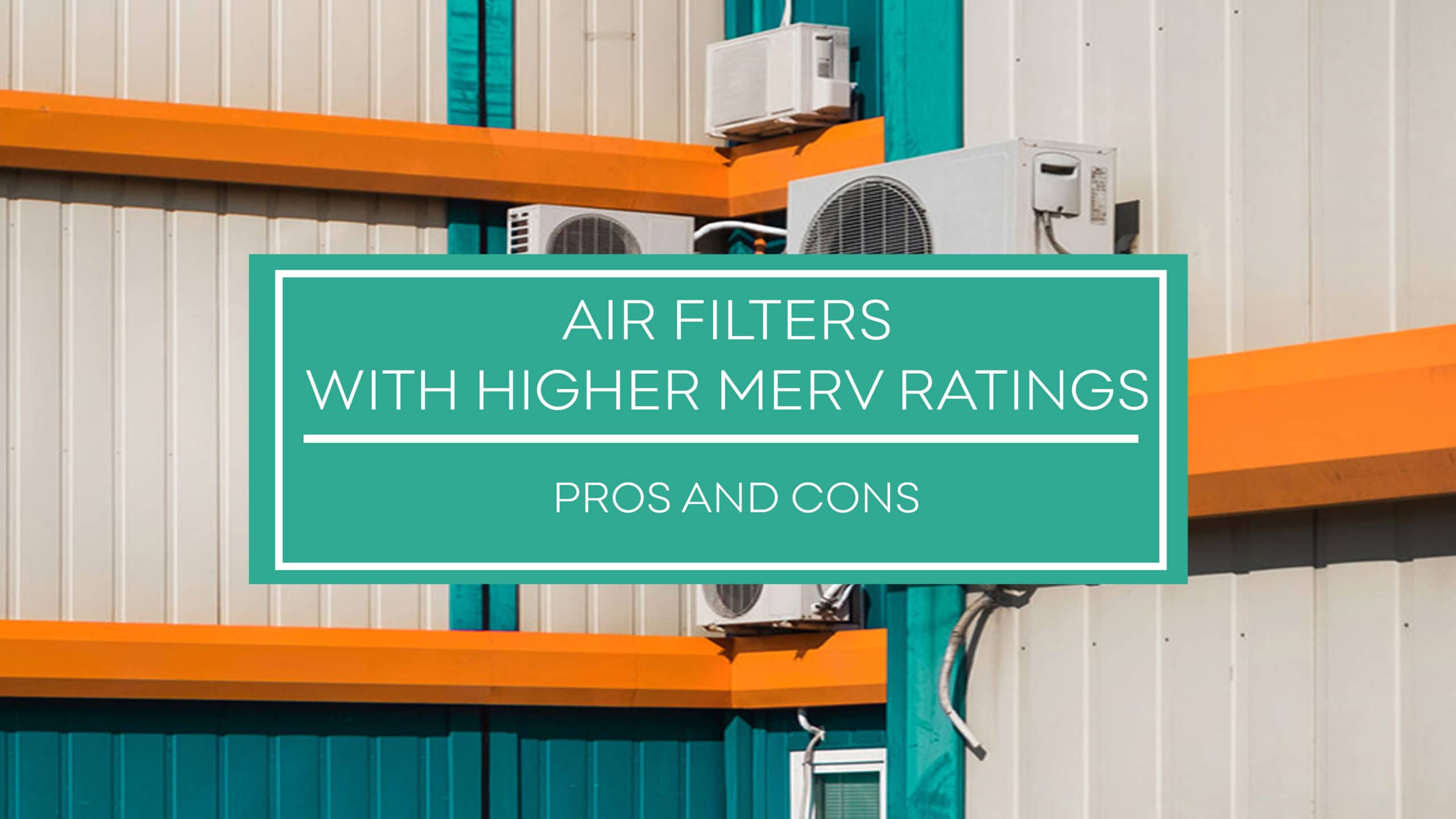What is the MERV?
Minimum Efficiency Reporting Value (MERV) is a measurement scale designed in 1987. MERV ratings determine an air filter’s capability and its level of filtration efficiency. American Society of Heating, Refrigeration, and Air Condition Engineers (ASHRAE) developed this rating system, which is now widely used in the HVAC industry.
Air filters with low MERV ratings can only block basic particles such as dust. However, air filters with higher MERV ratings can inhibit microscopic particles, such as smoke molecules, due to their tighter mesh weave.
Particles vary in size from 0.3 microns to 10 microns. Therefore, filters with 13 MERV ratings or upwards can filter particles closer to 0.3 microns. For areas in need of better filtration, an air filter with high MERV ratings will be a great choice.
A μm (micrometer) is one-millionth of a meter.
In Summary:
MERV Minimum Particle Sizes range:
1–4 > 10.0 μm
5–8 10.0–3.0 μm
9–12 3.0–1.0 μm
13–16 1.0–0.3 μm
17–20 < 0.3 μm
Different Types of Particles
The different types of particles that can contaminate our air are:
Even air filters with the lowest MERV rating (1-4) can still capture pollen, dust mites, cockroach debris, sanding dust, spray paint dust, textile fibers, and carpet fibers. Filters with a MERV rating of 17-20 are seldom necessary for a residential home.
What are the Types of MERV Filters?
There are four common MERV filters, which vary in terms of performance.

MERV 6 Filters
MERV 6 is the most basic filter. It has a microparticle performance rating (MPR) of 300. This filter is ideal for removing fine dust, lint, and pollen particles from the air. It’s also the most affordable option for budget-conscious homeowners.
MERV 8 Filters
ERV 8 has an MPR of 600 with a filter performance rating (FPR) of a solid 5. This filter can only filter out dust mites and mold spores from the air. For homeowners with indoor humidity issues, this one could be a good option.
MERV 11 Filters
The MERV 11 filter takes things up a notch. Aside from removing particles like MERV 6 and MERV 8, it can also filter pet dander, smoke, and smog. With an outstanding MPR of 1000-1200 and an FPR of 7, this filter is best for homeowners with pets. It's also an excellent choice for homeowners who are smokers or those living in metropolitan areas with lots of air pollution and smog.
MERV 13 Filters
Last but not least is the MERV 13 air filter. In addition to all of the above air contaminants, this filter can remove viruses and bacteria from indoor air, giving it an impressive MPR of 1500-1900 and an FPR of 10.
MERV 13 air filters are the highest-rated air filters for home use. It's is a great filter option for health-conscious homeowners. Any air filter with a rating higher than 13 will restrict airflow, which could cause damage to your HVAC system, resulting in an added expense to fix it.
The MERV 13 air filters will provide the cleanest air quality in your home acquired. Here’s what a MERV 13 filter can filter out that a lower-rated filter cannot:
According to Health standards, people that should consider using the MERV 13 filter are those
Living with:
With underlying conditions, such as:
As highlighted above, a higher MERV rating denotes better air filtering and is in fact, recommended for certain groups of people. Therefore, the worth relies on the need. If you are in the categories listed above, it's preferable and safe to get filters with higher MERV ratings as it filters out toxic particles that can hamper health and impede comfort.
How Much Do MERV 13 Air Filters Cost?
Prices of air filters may vary, depending on their MERV ratings and size. Filters with higher MERV ratings will be more expensive than those with lower MERV ratings. Higher MERV-rated filters are trapping much more particulate, making it dirty with debris and dust, causing you to replace it more often. However, lower MERV rated filters will need to be replaced more often, due to its fiberglass properties, making it prone to damage.
According to Filterking.com, the most common filter used is the 1-inch filter (5.88x12.13x1) with a MERV rating of 8 will cost $28.42. You can buy it in packs of four, six, or twelve. The price decreases as the quantity increases:
By contrast, a filter of the same size (5.88x12.13x1) with a MERV rating of 13 will cost $30.33 for one filter. The same package deals apply:
The price may vary, depending on where you decide to buy your filter. However, it will generally be the same difference in price when it comes to the MERV ratings. The price difference is only a few dollars, so is the higher MERV rating worth the extra few bucks? Let’s think about it.
Is A MERV 13 Air Filter Worth The Money?
While choosing the cheaper air filter options with a lower MERV rating may seem like a better option than spending a little bit more money on a higher MERV rated filter, it could cause you to suffer in the end. If you spring for the higher MERV-rated air filter, your home will be much cleaner, and therefore safer for you and your family or residents.
Consequently, choosing the cheaper, lower MERV-rated filter may save a few bucks at first, but are those few dollars worth sacrificing cleaner air? You can venture a guess, but let’s go with the answer we both know is right: No.
At the end of the day, the more expensive air filter can seem like a luxury, but in actuality, it is a necessity for your health and safety. Your peace of mind knowing that your home’s air is being cleaned efficiently with a great filter is worth the extra few bucks alone.
To get the top-rated MERV 13 filter, made with mini pleats and odor reduction technology, see the Filter King Titanium—it is the highest efficiency Filter King filter on the market.
More expensive air filters use more material of a higher quality to better filter your air. The cheapest filters are made of spun fiberglass, which does very little to filter your air compared to materials like paper, cotton, or polyester. Materials like paper, cotton, and polyester do a much better job of cleaning the air in your home.
In the same way that those materials hold onto sweat and dirt when you wear clothing, they also hold onto airborne dust and dirt better than fiberglass. The flip side is that woven materials cost more than spun fiberglass.
What's the Catch?
Air filter replacement is part of the routine maintenance performed by HVAC service technicians, though you can replace them on your own as well. This means you can upgrade from the one that came with your HVAC system. But is it always best to choose an air filter that has the highest MERV rating?
You might be surprised to learn that this isn’t often the case. It’s important not to choose an air filter that exceeds the recommended MERV rating your HVAC system is designed to handle. In most cases, choosing high-MERV air filters will be detrimental to your HVAC system’s performance. It’s like replacing your kitchen sink filter with mesh so fine that it causes water to back up. High-MERV filters restrict airflow, which can lead to increased wear and tear on your HVAC system, inefficient heating and cooling, and increased energy consumption.
According to the Energy Vanguard, higher MERV filters have higher resistance. When you add more resistance, you can get a bigger pressure drop across the filter. And that’s where the problems begin. The blower in the furnace or air handler is rated for a certain amount of pressure drop. If you use a lot of it up just to get the air through the filter, there’s not much left to move the air through the rest of the system.
When the pressure in the duct system goes up, the blower may use more energy. Paradoxically, that happens with the more efficient blower motors (ECMs), and not so much with the less efficient PSC motors.
ECM = electronically commutated motor
PSC = permanent split capacitor.)
And that brings up the next problem: reduced airflow. If your system is rated for a total pressure drop of 0.5 inches of water column (i.w.c.) and you use up half of it just at the filter, you’re not likely to get the amount of airflow the system was designed to deliver.
One consequence of low airflow is reduced comfort. In the hottest and coldest weather, your system may not be able to deliver enough heating or cooling to the house. Or it may just be one or two rooms that get uncomfortable.
Another consequence of low airflow is that the air conditioner coil may get too cold and even freeze up. That starts a vicious cycle of lower and lower airflow and a colder and colder coil until the coil is just a block of ice. Then the refrigerant doesn’t evaporate and goes back to the compressor in the liquid state, which can damage the compressor.
The same thing can happen with a furnace. Low airflow means the furnace heat exchanger gets hotter. It could even crack. If that happens, your duct system can become a carbon monoxide distribution system. You’ll sleep well…but you may not wake up.
But there is a positive consequence that comes with low airflow, too. In a humid climate, the air conditioner will dehumidify better. That’s only a benefit as long as the airflow isn’t so low that it turns the condensate to ice.
While as long as you have the correct filter you won’t encounter any issues, here are some possible issues to be aware of regardless:
- 1Resistance to airflow
- 2Increase in pressure in the duct system
- 3Increase in energy used to power your HVAC system
- 4Reduction of airflow
- 5Freezing of the air conditioner coil
- 6Damage to the compressor
- 7Cracking of the heat exchanger
- 8Existing carbon monoxide at home
Summary
An air filter with a higher MERV rating will cause more resistance to airflow. There are plenty of things that could go wrong with a higher MERV-rated filter. It is important to consult with a professional and ensure you get the correct air filter for your home.

